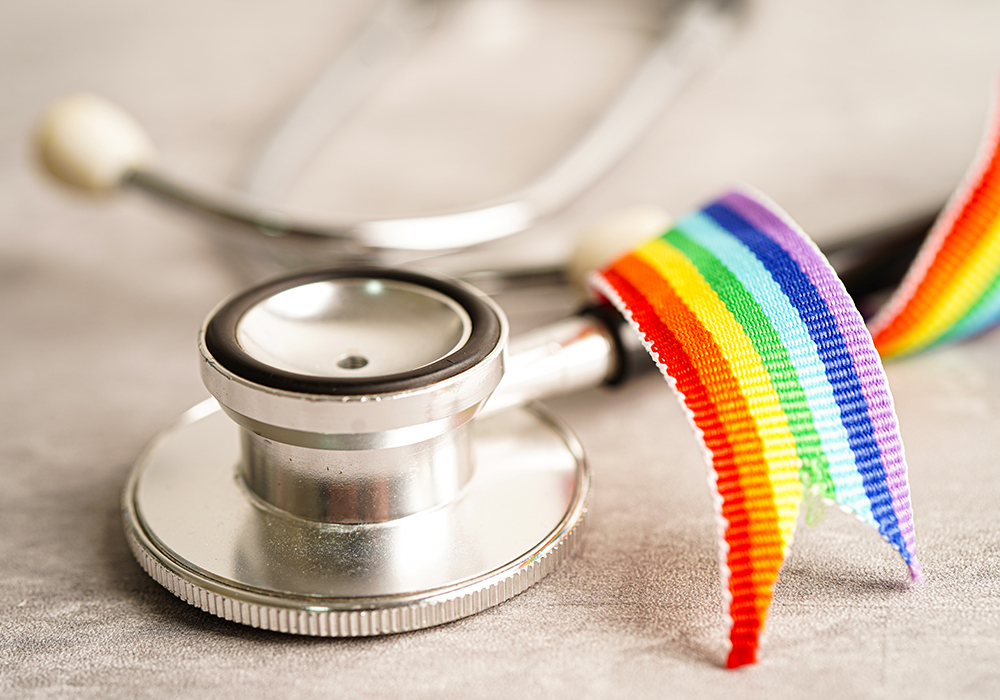About 7% of the U.S. population identifies as LGBTQ+, but understanding cancer in this population is difficult because surveillance data are limited to national surveys on risk factors and screening, the American Cancer Society (ACS) observed in a special section of its Cancer Facts and Figures 2024 report on cancer in the LGBTQ+ community.
More than 50% of LGBTQ+ individuals have experienced harassment such as slurs, violence, microaggressions, and sexual harassment, even in healthcare settings. “One in 6 LGBTQ+ adults, and 1 in 5 transgender adults specifically, avoid health care due to previous discrimination,” ACS reported.
It’s one factor implicated for the disparities affecting LGBTQ+ individuals’ access to cancer care, including prevention, screening, diagnosis, treatment, and palliative care. Minority stress may also contribute to the increased prevalence of some potentially modifiable cancer risk factors in the LGBTQ+ population, including smoking, excess body weight and physical inactivity, and alcohol use.
Cigarette smoking dramatically increases the risk of lung and 11 other cancers. About 16% of lesbian, gay, and bisexual individuals smoke, in contrast to about 12% of heterosexual individuals, ACS reported. Higher smoking rates may be a maladaptive coping mechanism to minority stressors, exacerbated by predatory tobacco advertisements. In grades 6–12, lesbian, gay, and bisexual youth are more likely to smoke cigarettes and use e-cigarettes than heterosexual youth. In addition, transgender youth are more likely to smoke cigarettes and use e-cigarettes than cisgender youth.
Excess body weight is a risk factor in at least 12 types of cancer. Compared to heterosexual individuals assigned female at birth, lesbian and bisexual individuals assigned female at birth are more likely to have excess body weight. The disparity may result from lower levels of physical activity: 35% of bisexual assigned females and 24% of lesbian assigned females reported no leisure-time physical activity, in contrast to 28% of heterosexual assigned females.
In addition, alcohol use is associated with increased risk of liver, esophageal, colorectal, oral, stomach, and breast cancers, and ACS found that lesbian, gay, or bisexual individuals were more likely to engage in heavy alcohol consumption than heterosexual individuals, particularly among those assigned female. Compared with 6% of heterosexual females, 14% of bisexual females and 8% of lesbian females reported consuming more than seven drinks per week.
Pathogens such as HIV, human papillomavirus, hepatitis B virus, and hepatitis C virus increase the risk of infection-related cancers, including cervical, anal, oropharyngeal, vaginal, vulvar, penile, and liver cancers. HIV infection is associated with a dramatically increased rate of infection-related cancers and is more prevalent in the LGBTQ+ population. Disparities also exist in rates of human papillomavirus infection, hepatitis B, and hepatitis C.
ACS said that barriers to cancer care for LGBTQ+ individuals include discrimination in healthcare settings, lack of provider knowledge on LGBTQ+ health needs, and fear of refusal of care. The organization called for increased data collection on sexual orientation and gender identity in health care to inform cancer control efforts and improve health outcomes for the LGBTQ+ population.
Read more about cancer and healthcare disparities in LGBTQ+ individuals in ACS’s full report, Special Section: Cancer in People Who Identify as Lesbian, Gay, Bisexual, Transgender, Queer, or Gender-Nonconforming, and find resources to support the LGBTQ+ patients in your care in the sidebar.






